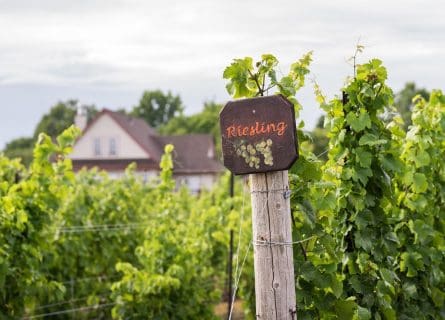
Riesling Grape Variety: Hidden from the Spotlight
October 18, 2022
Discover Riesling's charm, a white grape from Germany's Rhine region, cherished in Alsace, France. Unveil its secrets and delights
By: Barnaby Eales / Last updated: April 7, 2025
Understanding French wine labels opens the door to a diverse range of vinous offerings in terms of style, quality, and regional typicity, ranging from the new lighter wines of Brittany to the classic Bordeaux, Burgundy, Rhone, and Champagne and beyond to the Mediterranean wines of Provence, Languedoc-Roussillon, and Corsica.
Discover More About French Wine
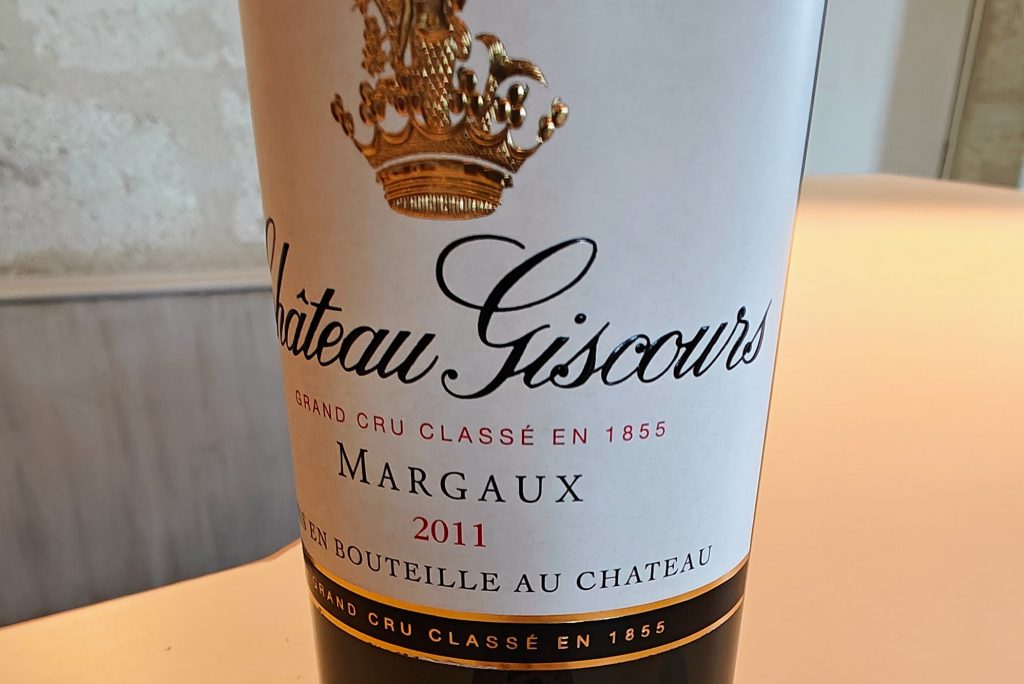
French wine labels show how a wine conforms with French and EU laws on provenance and quality standards of the appellation system, which is based on terroir (soils, climate, topography, and human factors) and its impact on wine production.
France is a reference point for the world’s best-known and/or planted grape varieties, such as Cabernet Sauvignon, Pinot Noir, Sauvignon Blanc, and Chardonnay.
Yet, other than in Alsace, French wine labels have historically emphasized the wine’s origin rather than listing the grape varieties on the labels.
In recent years, French wine labels have undergone a significant shift. Consequently, the once tradition-bound labels have embraced change, with grape varieties and wine descriptions often found on back labels.
This evolution, spurred by new EU rules, has included ingredients and nutritional information via QR codes (with English translations), further demonstrating the industry’s commitment to providing comprehensive wine information.
Obligatory labeling rules mandate listing a wine’s appellation, alcohol content, volume, provenance, the bottler’s name, the Lot or batch of wine, sugar levels, allergens, and health warnings for pregnant women. Low—or no-alcohol wines must be labeled as de-alcoholized wines.
Commonplace names: ‘Chateau,’ ‘Domaine.’
People behind the wine:
Côte or Coteaux: vineyards are on a slop or hillsides
Appellation:
Terroir
Generally, if a wine comes from a more specific location—for instance, when the name of a Beaujolais village appears on the front label—the better the wine will likely be.
Burgundy’s ‘Premier Cru’ wines are from single vineyards, indicating that these specific vineyards produce unique, high-quality grapes best showcased when vinified and bottled separately.
A Grand Cru (Great Growth) will specify the appellation, such as St Emilion, instead of Bordeaux to prevent confusion with the generic AOC Bordeaux appellation, which sits on the lowest rung of the quality scale.
Country of origin is indicated by the words “produit en,” “produit de,” “vin de,” or “élaboré en” (for sparkling wines). For Vin de France (VSIG) wines, the style of winegrower and country of origin can be combined (i.e., “vin mousseux de France”).
Vintage (Millésime in French), which indicates the year the grapes were harvested, is optional. When producers mention the vintage, 85% of the wine must come from that year.
Bottling Location: Mis en Bouteille au Château or au Domaine can appear on AOP or IGP wine labels for wines made at the winery, provided the wine never leaves the winery until it is bottled.
ABV – Alcohol by Volume percentage
Color: France recognizes three colors in wine: red, white, and rosé
‘Vin jaune‘ refers to white wine aged for six years in oak barrels after fermentation, with the formation of a yeast veil on the surface of the wine to protect it from oxidation.
‘Blanc de noir’ means white wine from red grapes.
‘Blanc de blanc’ in Champagne this means 100% Chardonnay.
‘Gris’ or ‘gris de gris’ – refer to pale rosé wines.
‘Orange‘ is a white wine produced by maceration with white grape skins.
Vieilles Vignes [old vines]. The age of old vines is unregulated, but the term is permitted on labels. Professionals must be able to justify its use. Old vines often provide more concentration and aromatic complexity to wines.
Cuvée: a blend of more than one grape or wine from specially selected barrels or vats and also suggests prestige or quality.
Cuvée Prestige: The finest blend from a Champagne house, made using the first pressing of grapes, known for its superior quality.
Appellation: AOC (PDO), IG (PGI), Vin de France (VSIG)
Grape variety: In French, “cépage” refers to the grape variety, which can be listed on a label if it makes up at least 85% of the wine. If multiple grape varieties are mentioned, they represent all the varietals used in the wine.
Tasting Notes often describe the aromas and profile of the wine together with food pairing suggestions.
Terroir: may cover the history of the vineyard, details of the soils, aspect, and height of the slopes where the grapes were grown.
In addition, you may encounter production details such as ‘Eleve en futs de bois’ or ‘Vielli sous bois,’ which means that at least half of the wine was aged in barrels for at least six months.
Ingredients and nutritional information: EU wines sold after 8 December 2023 must list additives and processing aids that could cause allergies and are still present in the final product via a QR code (or on back labels). Additionally, winemakers do not include yeasts, but they do include concentrated ‘grape must’ or sucrose for enrichment. Furthermore, they must include additives used to regulate acidity or stabilize the wine, oenological compounds, packaging gases, and the dosage added to sparkling wines. Finally, de-alcoholized wine, which has less than 10% alcohol, must show a minimum durability date.
Read more on the new EU wine labeling rules
Certification logos/seals
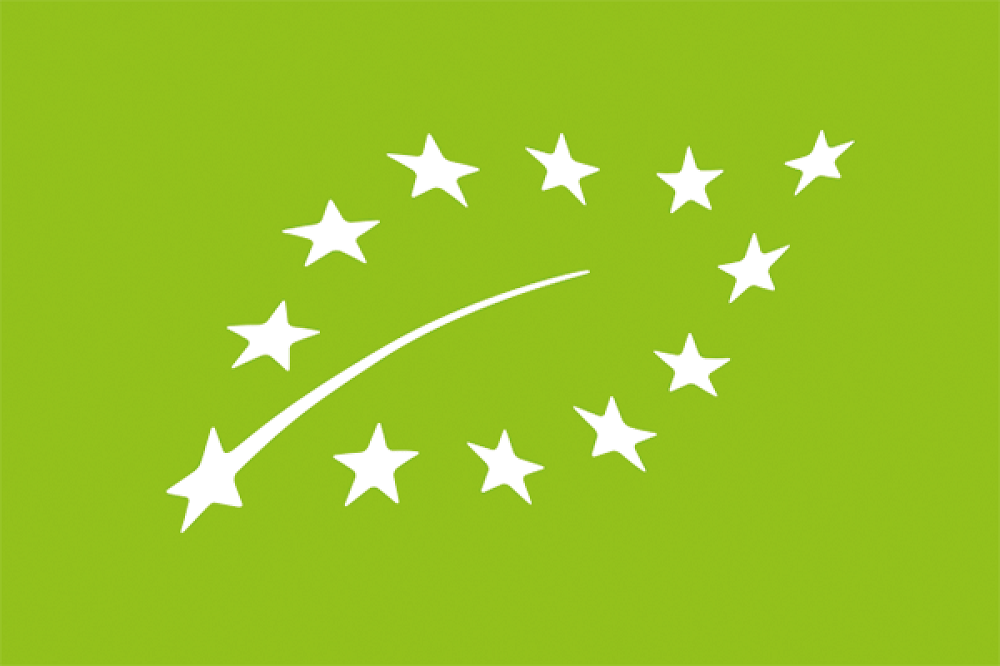
Organic Certification. Labeling with the European leaf logo is compulsory; winemakers may supplement it with the French AB logo. Read more
Demeter: a biodynamic label run by a private company
Biodyvin: is a fast-growing association of biodynamic producers based in France. Read more
Vignerons Independents de Francelogo: on labels represents an association of more than 7,000 smaller producers.
HVE: (Haute Valeur Environnement – The French Ministry of Agriculture awards the high environmental value label to wines, certifying their compliance with certain ecological performance thresholds.
Sulfites must be indicated above 10 mg/liter expressed as SO2, using the terms “sulfites,” “anhydride sulfureux,” or “contains sulphites.”
Further allergens: egg-based products are listed via the terms “œuf”, “protéine de l’œuf”, “produit de l’œuf”, “lysozyme de l’œuf” or “albumine de l’œuf”. Milk-based products are listed via the terms, “milk”, “milk product”, “milk casein” or “milk protein”.
The Lot or batch number: indicates a specific group of bottles produced under the same conditions. This number helps track and identify the wine’s production details, including the time and place of bottling, ensuring quality control and traceability.
Classification Systems
Grand Cru Classé and Premier Cru Classé wines are usually the most expensive Bordeaux wines at the top of the classification pyramid. Still, they represent a tiny minority of the wine produced in Bordeaux, so plenty of alternative quality wines are available to discover at lower prices. Along with the appellation name, a label will mention ‘Grand Cru,’ ‘Grand Cru Classé,’ and ‘Premier Grand Cru Classé.” Grand Cru or “great growth” indicates the rank of a particular winery in classification, which is specific to each AOC.
The Bordeaux region boasts approximately 60 Appellations d’Origine Contrôlée (AOCs), each with its unique classification system. Generally, wines labeled as “Classé” are recognized for their higher quality. While this distinction often suggests a higher price point, numerous exceptions exist, underscoring the diversity and complexity of Bordeaux’s wine classifications.
Interestingly, Petrus, one of the most expensive and prestigious Bordeaux wines, does not use “Chateau” and is not a “Classé” because its appellation, Pomerol AOC, did not receive a ranking in the 1855 classification of Bordeaux estates. Liber Pater, one of the most expensive wines in France and the world (selling for around $45,000 in March 2024), carries the label Vin de France.
For more information, see our blog post on French Wine Classifications
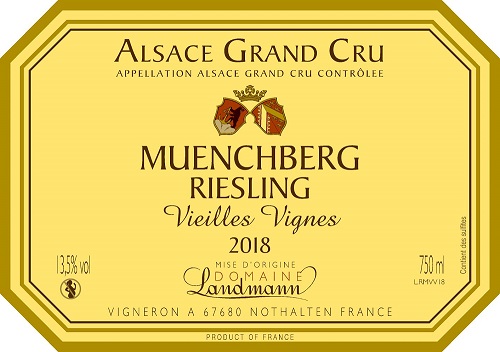
An unusual aspect of Alsace wine labeling is that the producer’s name and branding are often more important than the vineyard of origin. Alsace wines generally take their names from the grape varieties used to make them. The appellation system is AC Vin d’Alsace, Alsace grand cru, or, in the case of sparkling wines, AC Crémant d’Alsace. There are 50 named grand-cru sites.
Read more about the Alsace Wine Region
Sweetness levels:
Vendanges Tardives: a wine made from late-picked grapes with higher sugar levels.
Sélection de Grains Nobles: a dessert wine, made from grapes affected by botrytis, or noble rot.
Discover more about Alsace Wine Classifications
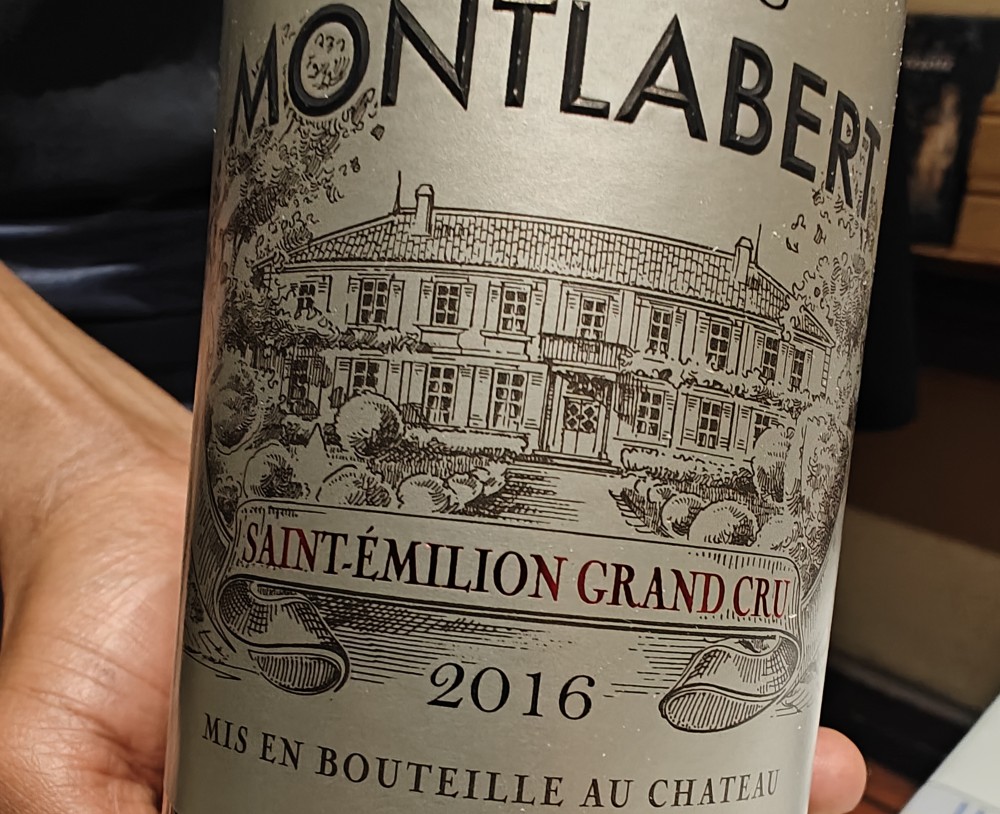
Back labels sometimes contain blends of grape varieties. Left-bank Medoc wine is usually Cabernet Sauvignon, Merlot, and Cabernet Franc. St Emillion usually blends Merlot and Cabernet Franc. Basic Bordeaux and Superior AOC allow for further grape varieties.
Read more about the Bordeaux Wine Regions
Chateau: property name, not always a castle, found on labels showing grapes were grown at the property and that the wine was produced and aged there.
AOC Bordeaux: generic term for most of Bordeaux’s production – lowest in quality.
AOC Bordeaux Superior: wines with a higher alcohol level.
Grand Vin: Producers use the optional wording for the main wine produced by a Château rather than the second wine, and it should not be confused with Grand Crus.
Cotes de Bordeaux: a group of right bank appellations
Grand Cru Classe: from (First to Fifth growths) – usually applies in Bordeaux to a specific Chateau or property rather than the vineyards.
Barrel Aging: is a minimum of six months but often longer. However, Bordeaux winemakers increasingly use diverse aging vessels, including amphorae, concrete eggs, and demi-johns, all of which they may mention on back labels.
Discover more about Bordeaux Wine Classifications
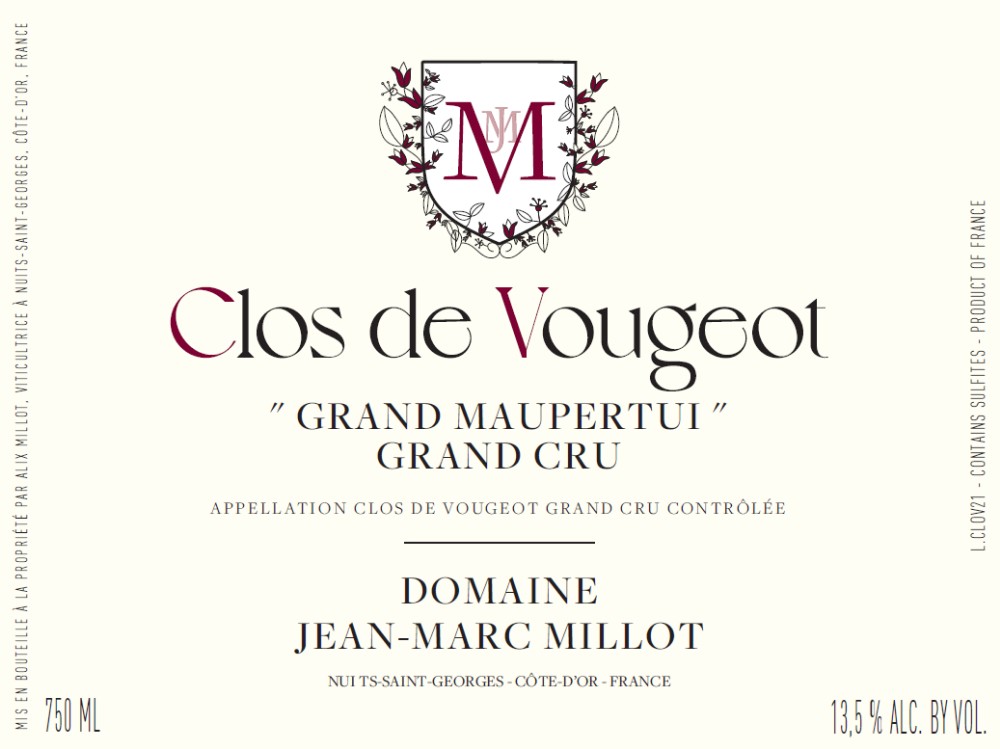
Burgundy wine labels are more complex than Bordeaux’s, where consumers must distinguish villages from vineyards. Its wine classification system is based on key terroir differences in vineyard sites rather than property. Two neighboring vineyards growing the same grapes can produce quite different styles of Pinot Noir and Chardonnay wines. The quality of a Burgundy wine primarily depends on its producer and the vineyard site, which is why labels include vineyard names along with their appellation and quality designation.
Scarcity of total production but strong demand means exorbitant prices, especially if a vineyard only makes a small quantity of wine, like La Romanee Conti, which has a vineyard area of 1.8 hectares. So, research well-regarded producers in regional alternatives.
Read more about the Burgundy Wine Regions
Domaines (property): is used rather than Chateau.
Lieux-dits: specific vineyards that have retained their historical names of origin.
Négociants: Merchants who blend wines or make wine from must or base wine.
Regional: Basic Bourgogne AOC such as Bourgogne Rouge.
Climate: individually named vineyard plots in Burgundy.
Village: an appellation that takes its name from the commune where the grapes are grown, such as Nuits-Saint-Georges AOC.
Premier Cru: wines from single vineyard plots. The bottle label will state the commune and the plot, such as Vosne Romanée Premier Cru Aux Malconsorts AOC.
Grand Cru: wines made from a single, exceptional vineyard plot. The bottle label will state only the name of the climat, such as Musigny Grand Cru AOC. There are 33 Grands Crus in Burgundy, representing the most exceptional vineyard plots, taking the name of the specific vineyard plot, known as a ‘climat.’
Read more about Burgundy Wine Classifications
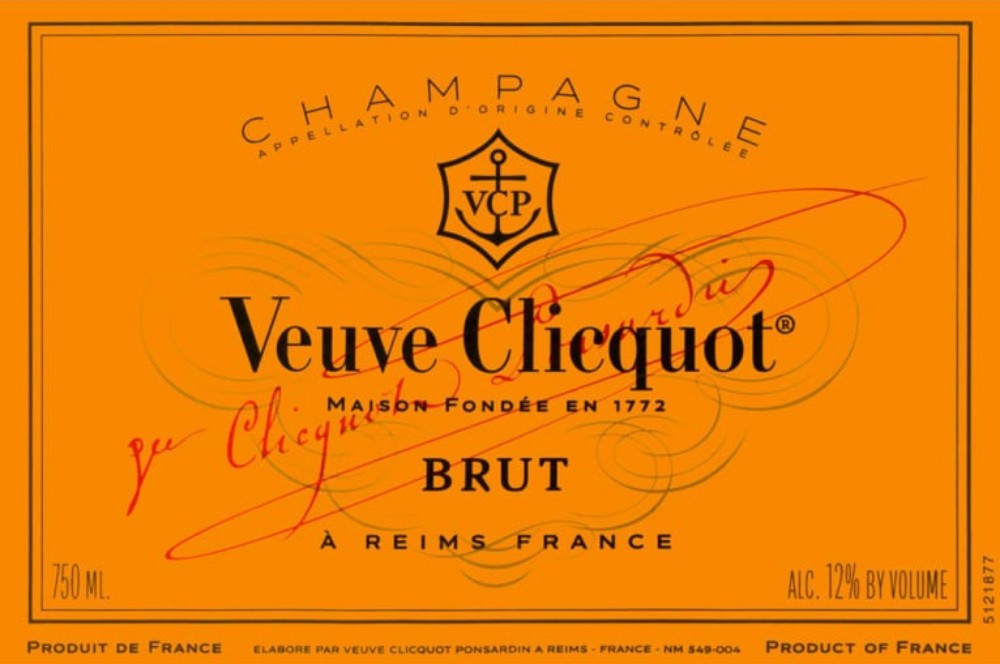
The region comprises 34,000 hectares, with 320 villages classified as crus. Typically, Champagne houses buy grapes from growers, and then cellar masters blend wines to make Champagne, but growers are increasingly making their own quality Champagnes.
Read more about the Champagne Wine Region
Grand Cru or Premier Cru Classifications Seventeen villages rank Grand Cru and 42 as Premier Cru.
Sweetness levels:
The initials of each Professional registry number (Le numéro d’immatriculation professionnelle) found on each Champagne label show who makes the wine and the grapes. For instance, N.M. initials indicate that ‘Négociant Manipulant’ purchased the grapes, musts, or wines and controlled their elaboration on their premises before marketing the Champagne. All major champagne houses and brands fall into this category.
Vin Doux Naturel – refers to the wine’s natural sweetness, the sugar that remains after the addition of alcohol has stopped the fermentation.
Read more about the Languedoc-Roussillon Wine Region
The wine region covers 965 km (600 miles) and has dozens of appellations. It is known mainly for Sauvignon Blanc, Chenin, and Muscadet (Melon B) wines. In addition to Saumur-Champigny’s Cabernet Franc reds, there are peculiarities such as the Quarts de Chaume, the Loire’s only Grand Cru appellation in which producers can only make sweet wines. Coulée de Serrant is an appellation covering a single 7-ha vineyard that makes dry white wines.
Crémant de Loire: traditional method sparkling wine. Saumur Touraine Anjou Vouvray and Montlouis appellations allow sparkling wine production.
‘Rosé de Loire’ is a dry rose and one of the AOC rosés produced widely in the Loire Valley. Rosé d’Anjou wines from the Anjou district is also home to the sweeter “Cabernet d’Anjou”
Knowing the estate and producer counts much more than Provence’s three appellations in Provence. The region accounts for approximately 40% of French appellation-labeled (AOC) rosés.
Read more about the Provence Wine Regions
Côtes du Rhône: Best known for its opulent red wines, the Rhône is home to Chateauneuf-du-Pape, which is one of the 17 ‘Crus’ (first growth appellations) top-level Rhône wines. The names of AOC ‘Crus’ communes are mentioned on labels rather than Côtes du Rhône.
Northern Rhône: Eight of the ‘Crus’, Côte-Rôtie, Condrieu (white wine), Château-Grillet, Saint-Joseph, Hermitage, Crozes-Hermitage, Comas, and Saint Péray are located in the Northern Rhône, famous for its Syrah reds.
Southern Rhône: ‘Crus’ include Cairanne, Gigondas, Lirac, Gigondas, Lirac, Tavel, Beaumes de Venise, Rasteau and Châteauneuf-du-Pape.
Southern Rhone reds are known for their Grenache, Syrah, and Mourvedre blends.
Read more about the Rhône Wine Regions
There are three further classification distinctions found on labels:
Taking the time to look at labels, including back labels, allows you to better understand wines and their classifications. Tasting wine from various classifications and regions will give you a better idea of what labels indicate and ultimately show that price does not always equate to quality.
French wine historically expresses distinctive local customs, traditions, and power structures, reflected in labels through classification. Yet, production methods are diversifying at a considerable rate, going beyond any preconceived notion of what a region may historically be known for.
Therefore, visiting French wine regions today provides more insight into a changing culture of wine production, which can be difficult to gauge when looking at labels. Together with gaining a sense of the diverse geography, history, and contemporary scene of French cuisine, tasting wine in situ is critical to experiencing the production philosophy of wine and, of course, la belle vie.
* Together with my own personal experiences, here are sources used for French Wine Labels
If you would like us to customize an exclusive luxury tour, contact us and let us know your travel plans. We offer luxury food and wine tours for private groups of a mininium two guests. In addition, all of our private, chauffeured tours are available year-round upon request.

